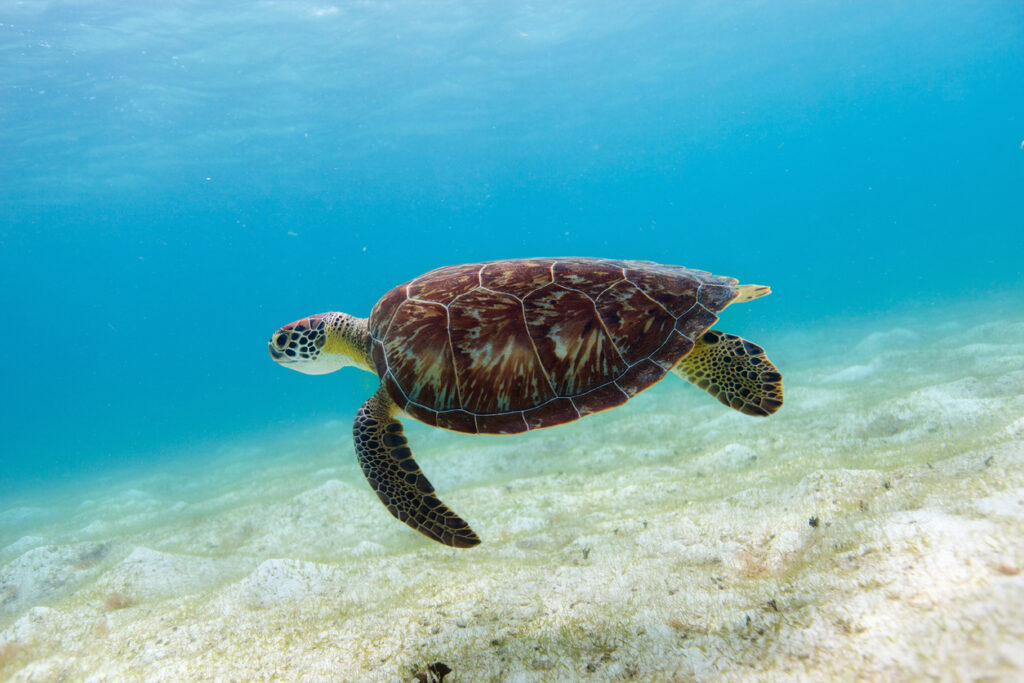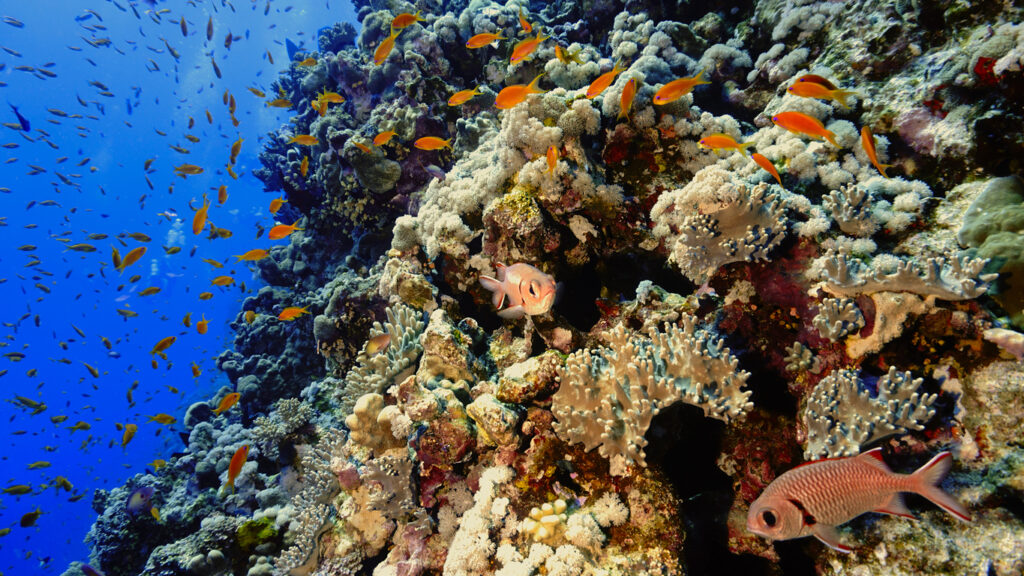Each year, the Caribbean Sea brings millions of tourists to the countries and islands that are on it. With such a rich and colourful biodiversity of plants and creatures calling it home, it’s clear to see why so many people are drawn to it.
So, if you’re fascinated by the world’s seas and want to learn more, you’re in the right place. Whether you’re itching to uncover the most exciting facts related to the Caribbean Sea or want to delve deeper into the creatures found most often in these waters, this blog will leave no stone unturned.
Where is the Caribbean Sea?
The clue is in the name really when it comes to the location of the Caribbean Sea. But just in case you need a quick geography refresher, it sits just south of the Gulf of Mexico, bordering the Atlantic Ocean to the east, and Central and South America to the west.
Plenty of countries and islands sit on and around it. To be precise, nine Caribbean countries are on the mainland to the west of the sea, including Mexico, Belize, Guatemala, and Honduras. Meanwhile, the eastern side of the sea is where you’ll find the Caribbean islands, such as St Lucia, Barbados and Grenada.
How big is the Caribbean Sea?
Classified as one of the world’s largest seas. The Caribbean Sea covers a massive area of around 2.75 million kilometres squared. To put its size into perspective, the sea is around nine times the size of the UK!
Features of the Caribbean Sea

So, what are some of the main features of the Caribbean Sea? From the depth to the average temperature, let us answer some of your burning questions below.
How deep is the Caribbean Sea?
On average, the Caribbean Sea is around 2,200m deep. Its deepest point can be found in the Cayman Trench between Cuba and Jamaica. Here the water is believed to reach depths of around 7,686m.
What’s the average temperature in the Caribbean Sea?
The average water temperature is around 27°C (80°F), and this rarely changes. Throughout the year, the temperature only differs by a few degrees across the entire body of water. Though the temperature stays mostly the same, the tropical climate in these waters means that other weather variations are quite common.
Some areas of the sea will experience an average of just 25cm of rainfall, while others are known to have been hit with averages closer to 900cm. Intense tropical storms are relatively common in the north. These are practically non-existent in the southernmost areas of the Caribbean Sea.
What does it look like?
The waters are typically clear, which is why visitors love to dive and snorkel in this sea. It’s easy to get a good view of the variety of plants, coral and creatures living down in the depths!
Is it a calm sea?
The Caribbean is generally known for smooth sailing, though it can get choppy in areas where it meets with the Atlantic Ocean. When bodies of water meet, bigger waves and rockier conditions should be expected. This mostly affects the northern and eastern edges of the sea, where more intense weather variations can usually be found.
Which creatures are found in the Caribbean Sea?

The tropical climate in the Caribbean provides the ideal conditions for a range of exciting marine life to thrive in. From bigger creatures like sharks, dolphins and manatees to smaller ones like turtles and eels, there’s no shortage of variation in these waters!
Sand Tiger Sharks can often be found in subtropical and temperate waters, the shores of Caribbean Sea offer an ideal climate for them. Lionfish are also commonly found in the Caribbean Sea, and feature brightly coloured, bold stripes and long spines. They might be easy to spot because of their markings, but watch out for these fish as they are actually venomous!
Another species often found swimming around in the Caribbean Sea are Stingrays, who are closely related to sharks. Similarly to Sand Tiger Sharks, these fascinating sea creatures are typically found relaxing in the coastal areas and shallow waters. They prefer warmer temperatures too, which is why the tropical climate provides the perfect habitat for them.
These creatures might thrive in the waters of the Caribbean Sea, but you don’t need to travel all the way across the world to see them and find out about their habitats. Blue Planet Aquarium is home to Sand Tiger Sharks, Lionfish and Stingrays, amongst many other exciting creatures. You can find many of these species in our Ocean Exhibit, alongside around 100 other species of marine animals!
Hundreds of other creatures live in this vast sea, including Moray Eels. These bizarre creatures are difficult to find, and usually take up residence in hidden areas of reefs. Poisonous Rock Fish also hide deep under water between algae and coral at the bottom of the Caribbean Sea.
Facts about the Caribbean Sea

Ready to find out some of our favourite facts and figures about the Caribbean Sea? Below are six of the most exciting things to learn about this wonderful sea!
- The Caribbean Sea is home to the second-largest barrier reef in the world, the Mesoamerican Barrier Reef. It stretches over around 700 miles and provides the perfect conditions for a range of coral to form, creating habitats for many wonderful marine creatures.
- Despite being almost six times smaller than the Arctic Ocean, which is the world’s smallest ocean. The Caribbean Sea contains 14 percent of the world’s reefs.
- More than 12,000 marine species are known to live in the Caribbean Sea. Over 1,000 of these are fish species like flying fish, moray eels, bull sharks, tiger sharks, and Caribbean reef sharks. Around 90 mammal species also live in the Caribbean Sea, including dolphins, sperm whales, manatees, and seals.
- The Caribbean Sea is home to more than 7,000 islands, belonging to 28 nations in total.
- The average depth of the Caribbean Sea is around 2,200m below the sea’s surface.
- Providing approximately 170 million tons of oil each year, the Caribbean Sea is one of the largest oil producing regions in the world.
Book your tickets and plan your visit to Blue Planet Aquarium where you can find out more about the world’s marine life and the different bodies of water they live in.